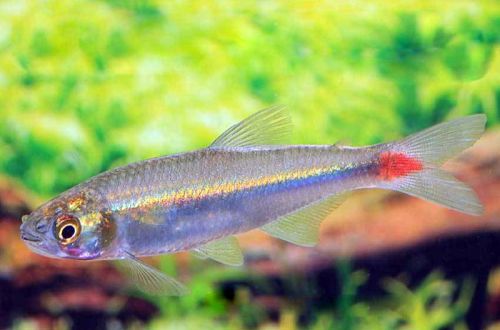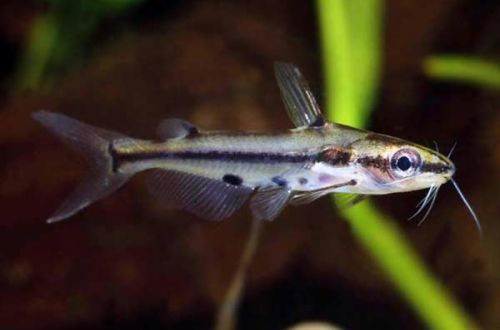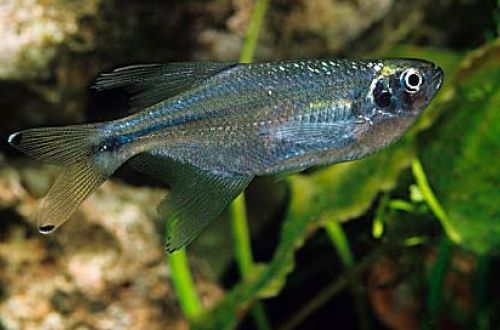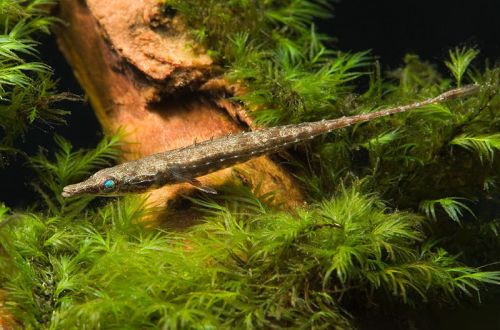
Afiocharax alburnus
Aphyocharax alburnus or Golden Crown Tetra, scientific name Aphyocharax alburnus, belongs to the Characidae family. Comes from South America. The natural habitat extends from the central states of Brazil to the northern regions of Argentina, covering various biotopes. Inhabits mainly shallow sections of rivers, backwaters, swamps and other shallow water bodies with rich aquatic vegetation.

Description
Adults reach a length of about 6 cm. The fish has a slender, elongated body. The coloration is silvery with a blue tint and a red tail. Sexual dimorphism is weakly expressed. Males look more graceful against the background of females, which seem somewhat larger.
Afiocharax alburnus is often confused with the related Redfin Tetra, which has a similar body shape but reddish fins in addition to a red tail.
Brief information:
- The volume of the aquarium – from 80 liters.
- Temperature – 20-27°C
- pH value is about 7.0
- Water hardness – any up to 20 dH
- Substrate type – any dark
- Lighting – subdued or moderate
- Brackish water – no
- Water movement is weak
- The size of the fish is about 6 cm.
- Food – any food
- Temperament – peaceful, active
- Keeping in a flock of 6-8 individuals
Maintenance and care, arrangement of the aquarium
The optimal size of the aquarium for a flock of 6-8 individuals starts from 80 liters. The design is arbitrary, subject to a balance between free areas for swimming and places for shelters. Thickets of plants, snags and various decorative design elements can become a refuge.
The fish are very mobile. During their games or if they feel danger, the slopes jump out of the water. A lid is a must.
The vast natural habitat predetermined the ability of this species to adapt to various conditions. Fish can live in a fairly wide range of temperatures and values of hydrochemical parameters.
Aquarium maintenance includes several standard procedures: weekly replacement of part of the water with fresh water, removal of organic waste (food residues, excrement), cleaning of side windows and design elements (if necessary), equipment maintenance.
Food
The basis of the daily diet will be the popular dry food. If possible, live or frozen foods such as brine shrimp, bloodworms, daphnia, etc. should be served several times a week.
Behavior and Compatibility
Peaceful, active fish. Males during mating games compete with each other, but do no harm. All their activity is limited to “demonstration of force”. It is recommended to maintain a group size of 6-8 individuals. Compatible with most species of comparable size and temperament.





